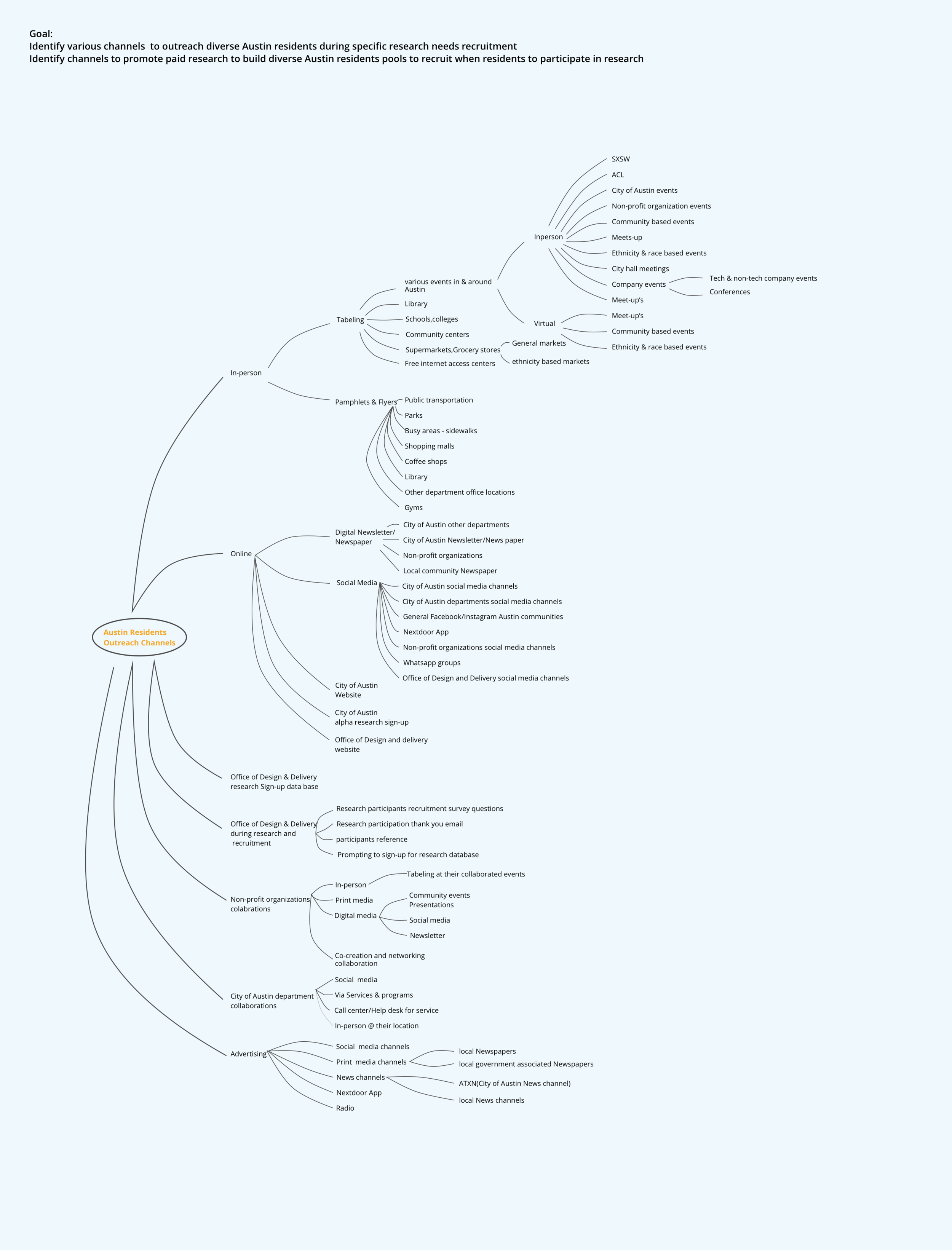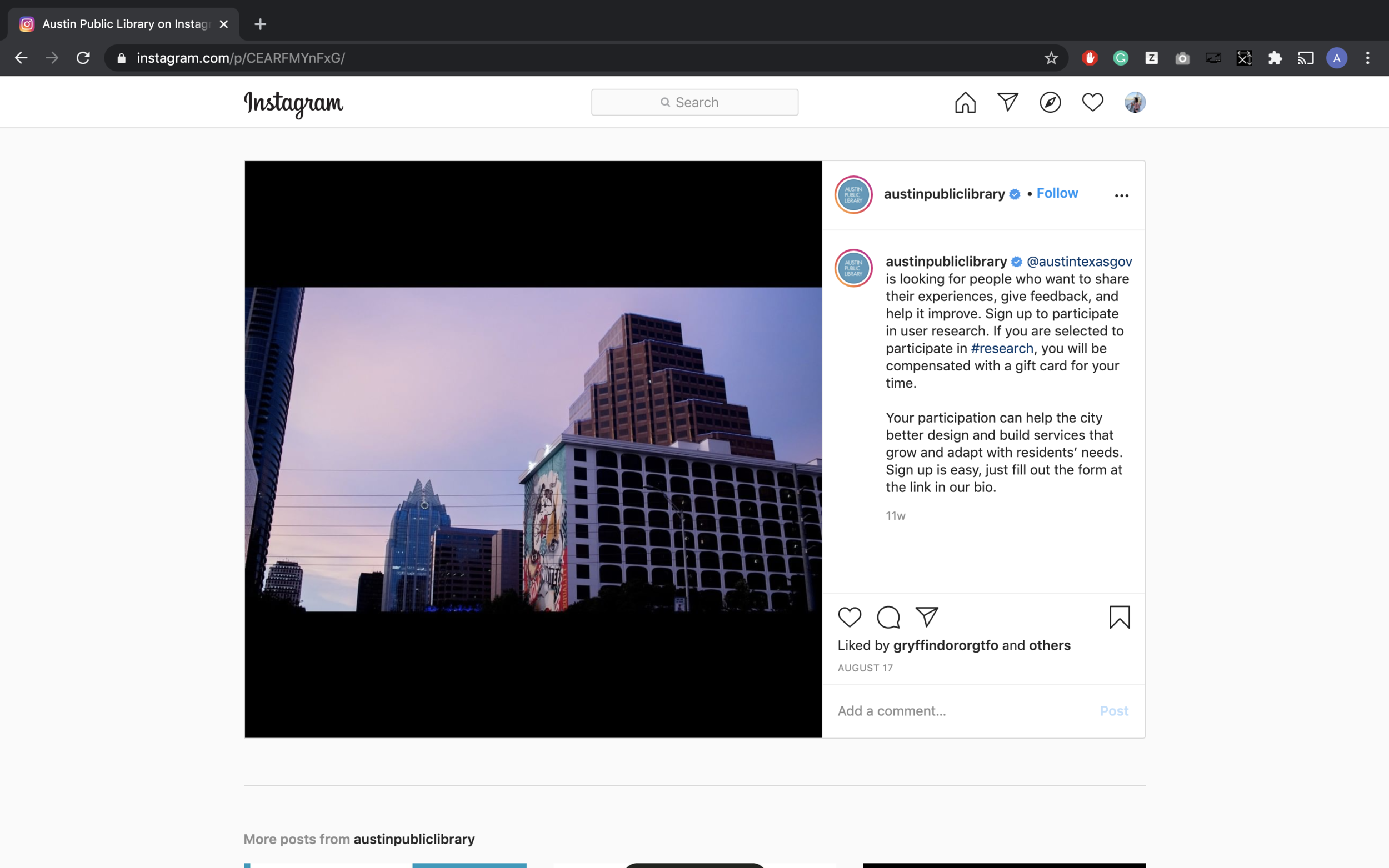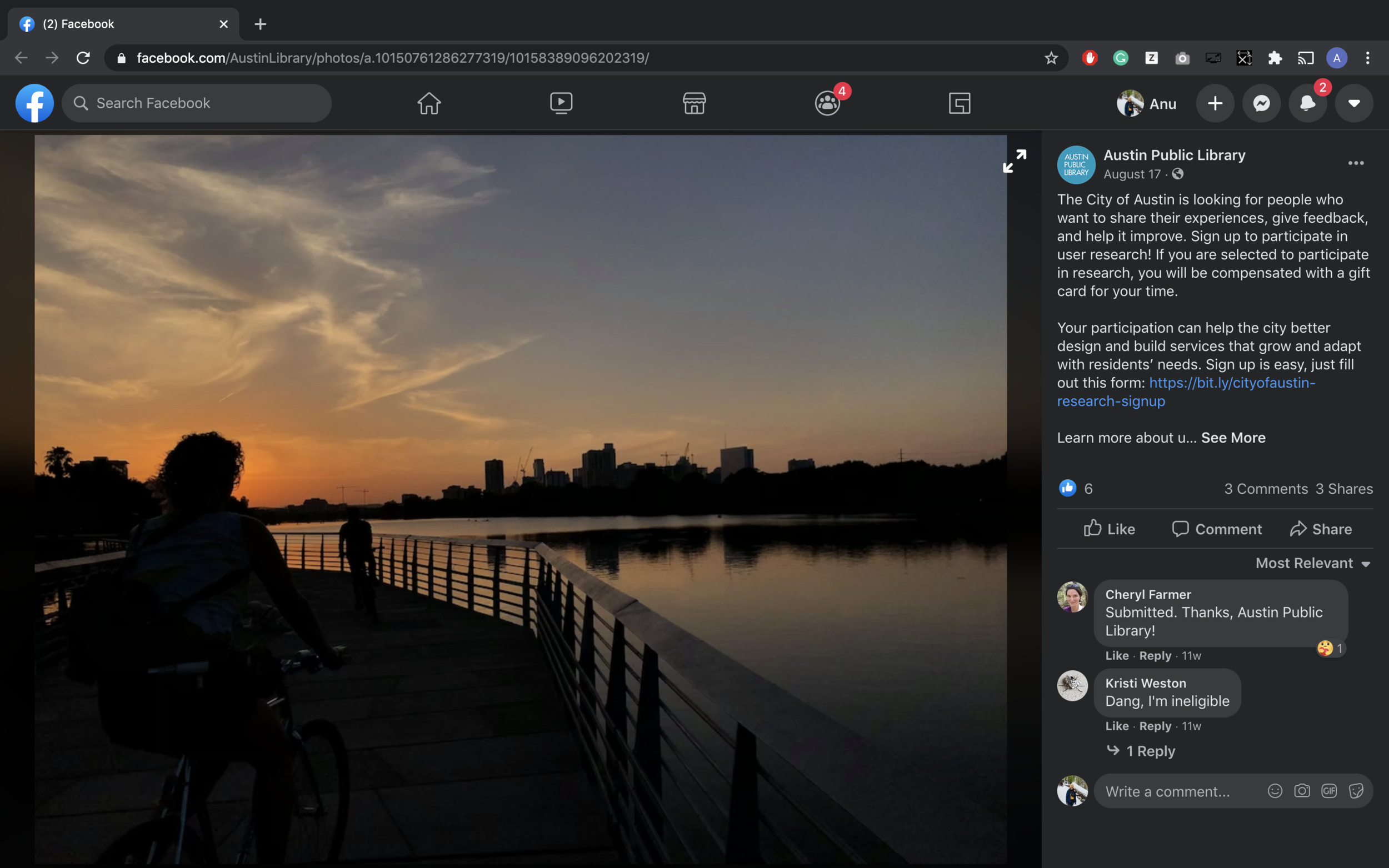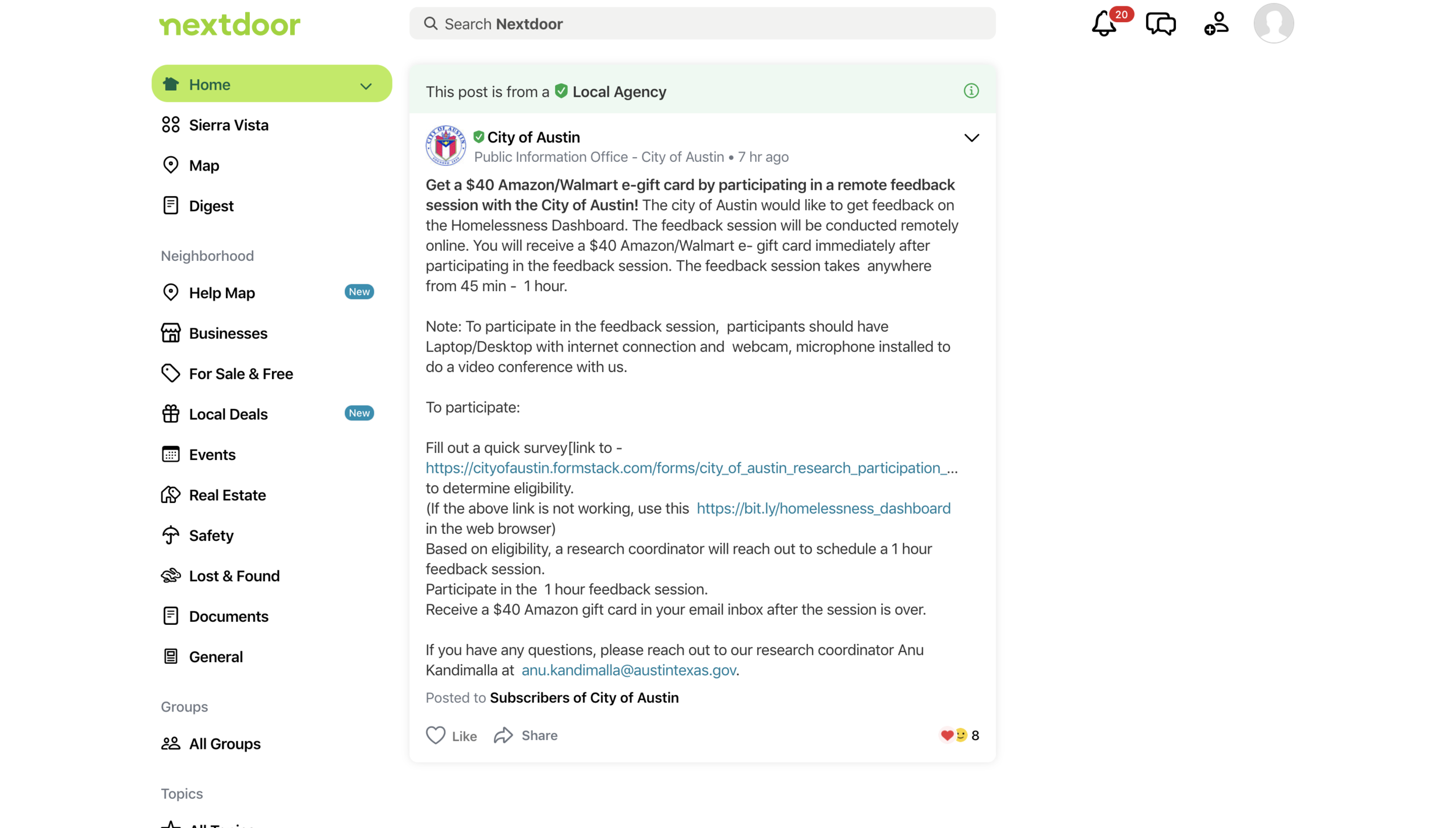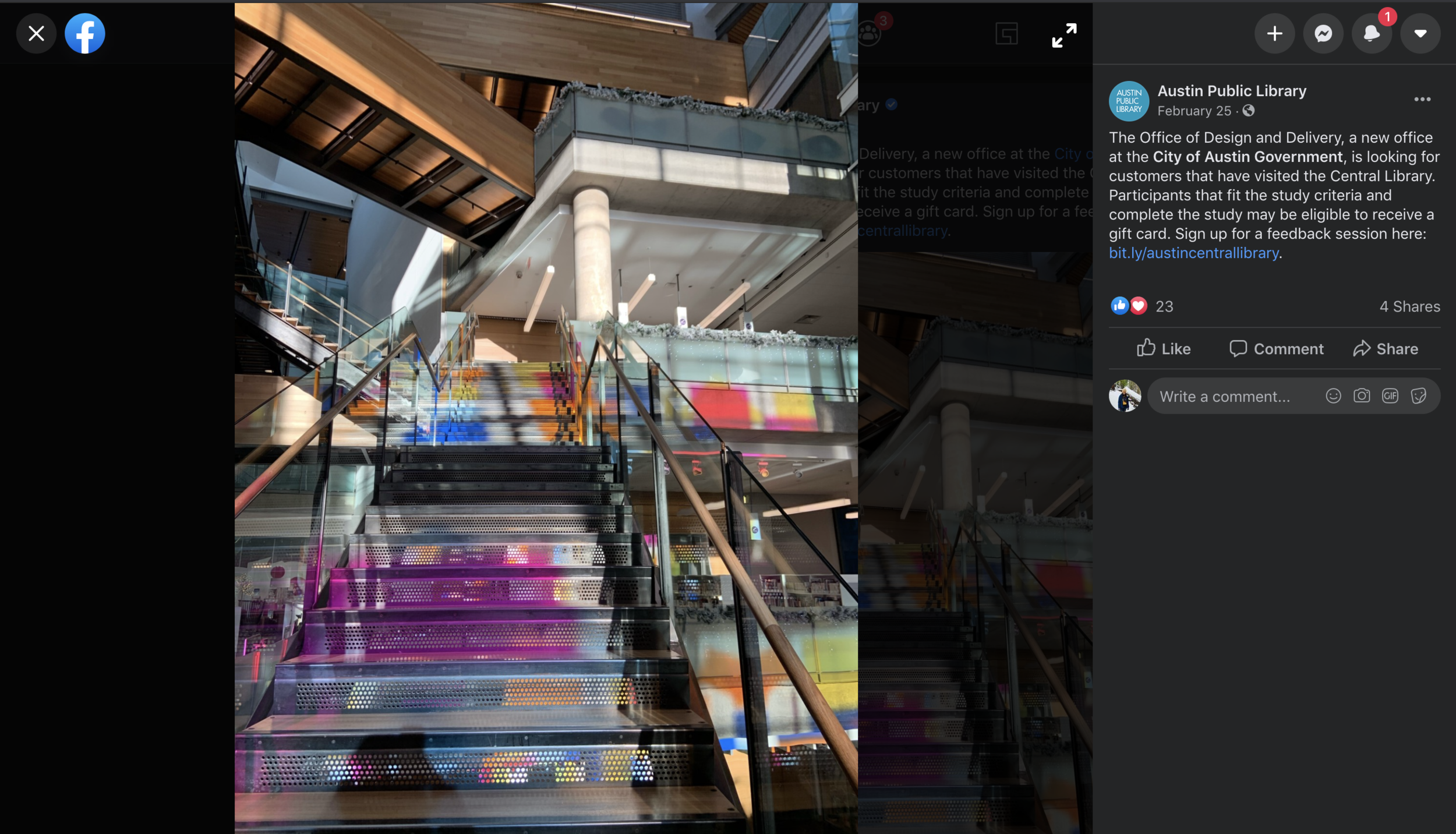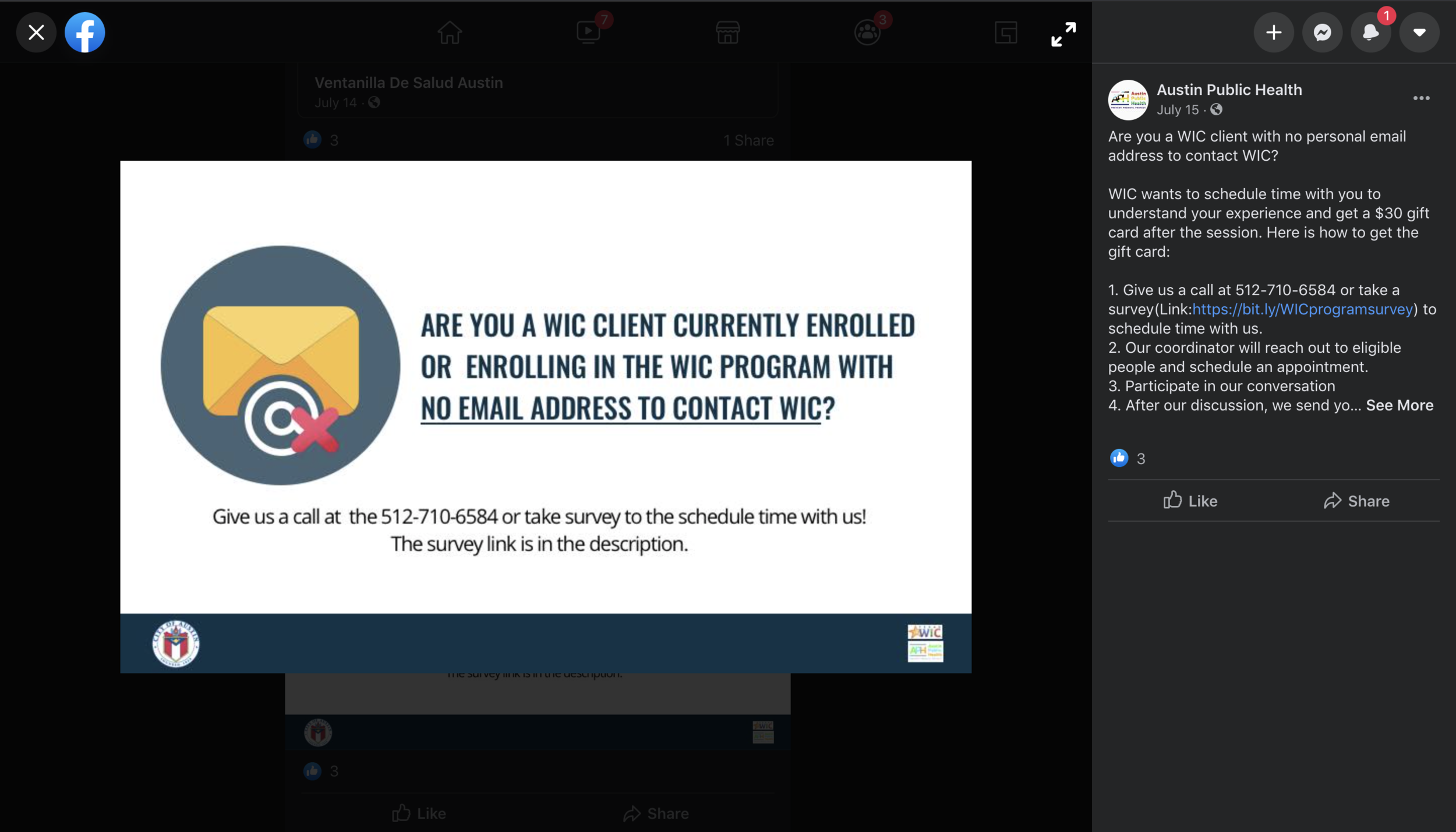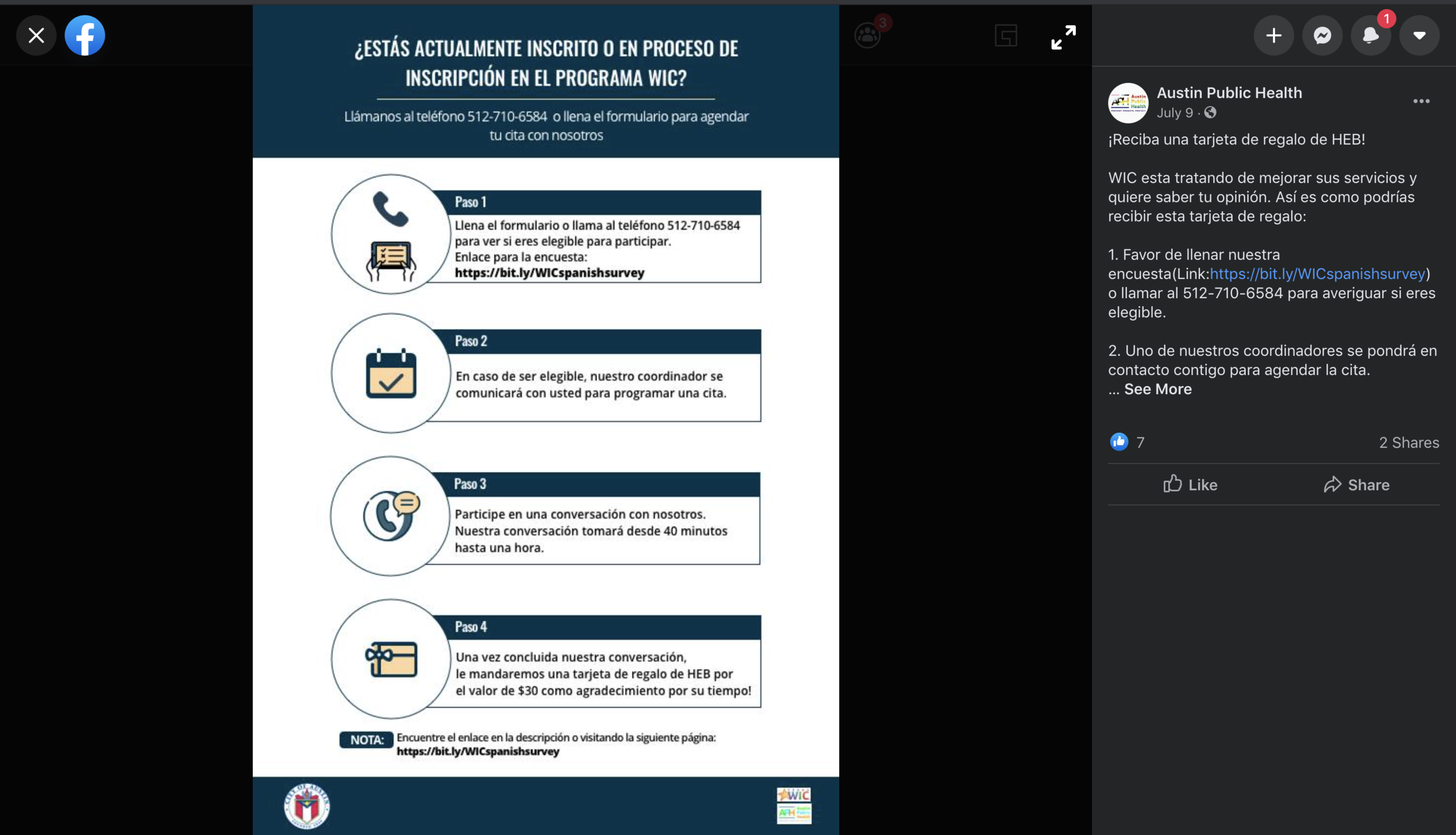
Design thinking approach to identify the channels to promote research and recruit diverse Austin residents
April 2020
Project details
Background information:
This is the process of how I used various design thinking methodologies to identify the various diverse channels to promote the paid research and build the standardized recruitment model at the Office of Design and Delivery(City of Austin)
Outcomes:
Recruitment strategy, Outreach and recruitment channels, Redesigned research participant survey questionnaire, City of Austin legal outreach, and recruiting insights
Tools:
Whiteboarding, Mind-map, Prioritization matrix, Survey design methodologies
Timeline:
4-week
Research overview
Problem challenge
How to provide diverse and equitable opportunities by outreaching and recruiting diverse Austin residents to share their experiences while using city services and the city website by participating in research with the City of Austin to re-design and improve the city services, city website, and city programs
This problem challenge was identified from one of the research recruitment retro sessions. Within one month, by using divergent and convergent design thinking processes,
I identified and validated channels and mediums to promote and recruit diverse Austin residents to participate in the research and started building a recruitment strategy for each identified channel with the idea of “test, learn, and improve.”
Improved existing Austin resident’s recruitment process.
Why diverse and equitable research recruitment at the City of Austin is important?
When building or redesigning a City of Austin website or improving a city service and programs it’s really important to outreach and recruit diverse Austin residents to understand their needs and pain points. However, without fully knowing and understanding who the actual Austin residents are and how to reach out to them, recruiting residents leads to collecting incomplete and non-valuable information. Government bodies are sometimes unapproachable for certain communities—such as refugees, non-immigrants, and immigrants, some races and ethnic groups, etc. to share their experiences.
Demographics studies
To bridge the knowledge gap of who the actual Austin residents, started studying the Austin demographics data to learn race and ethnic distribution, gender distribution, and accessibility distribution, etc.,
This quantitative research and demographics knowledge came in handy while recruiting the research participants for other specific research at the City of Austin by thinking of age, gender, ethnicity/race, income, and education distribution and also iterate on the general research sign-up questionnaire to build the research participant pool.
Experience -Journey map
Kicked off the barnstorming session with 1-hour long experience -journey mapping of the current research process at the Office of Design and Delivery(City of Austin) to map out the research process, roles involved in the research process at ODD, and gaps in the current participant’s recruitment process
Research participant recruitment baseline
Insights from the journey mapping
A baseline for the current Austin residents recruitment process
(Note: Refer to Experience-Journey mapping)
Current recruitment channels and gaps in the recruitment channels
In-person tabling
Austin residents research participants database build from previous research recruitment
Types of research recruitment needs
1.Digital product research
(E.g., City of Austin website - Generative research, usability test, survey research)
2.Service based research
(E.g., City service prototype testing, Generative research, Homelessness research)
In-person tabling Austin residents recruitment at Austin central library
Austin residents research participant database build from past research
Research sign-up promotion in city of Austin website
Current recruitment channels audit
I audited the existing research promoting and recruitment process to identify the gaps and improve the recruitment process. One of the key findings from the auditing is the research sign-up questionnaire to build the participant data pool is not gathering the complete diversity information to achieve diverse participant recruitment. To solve this, redesigned the content on the research sign-up webpage and iterated on the research sign-up survey questions.
One of the improvements to the existing recruitment channels
Iterated research sign-up questions to gather diverse information
Constraints
The Office of Design and Delivery works on a funding-based project model, and we don’t have funding for this research. To continue to build a standardized recruitment mode, l tested each channel with real-time project recruitment to validate and improve the strategy.
Unaware of the City of Austin’s legal criteria for promoting, outreaching, and collaborating programs with Austin residents to participate in research.
To know more about the legal criteria involved in research promotion and outreach, I scheduled a meeting with one of the City of Austin attorneys to discuss and understand any existing legal constraints and how to overcome these constraints, and I also reached out to the equity office. (link)
Leadership agreeing on conducting research. The leadership is slowly seeing the value of the Human-centered design approach to solve the problem by working with us and our team. To get the stakeholder’s buy-in, I always make sure to provide the qualitative and qualitative data with quotes to create empathy.
Research process
Started the ideation process by diverging and converging design thinking methodologies like a Mind map, prioritization matrix with the goal to identify, test, and improve the channels to promote and recruit diverse Austin residents. The outcomes of the ideation process are -
Various channels to reach out to and recruit diverse Austin residents to participate in research with the City of Austin
Improving the current recruitment strategy by considering the city’s diversity and equity needs
Mind-mapping
The exercise helped in unpacking all potential, feasible channels to promote and outreach to the diverse Austin residents and also helped in uncovering the recruiting channels clusters, patterns. This artifact is used as a reference document to identify the appropriate channels to promote and recruit research participants when in need of recruiting residents to participate in research at the City of Austin.
For example, I assisted Austin Resource Recovery (ARR) with research participant recruitment. During the recruitment strategy meeting with ARR, I recommended appropriate channels to reach out to and recruit Austin residents for their research by referring to the mind map.
Prioritization matrix
To prioritize and identify the most effective channels discovered from mid-map to test and build a standardized strategy to recruit research participants at the Office of Design and Delivery, I did a 2x2 prioritization matrix exercise.
PRIORITIZATION MATRIX EXERCISE 1
To identify the outreaching channels with high diversity outreach which yields high research participants sign-ups, I plotted the 2x2 matrix between diversity outreach(y-axis) and the number of research sign-ups(x-axis).
PRIORITIZATION MATRIX EXERCISE 2
The second prioritization matrix was plotted between the feasibility (x-axis)and the effort needed to promote and reach out using the channels discovered from the mid-map exercise(y-axis).
Here are identified and prioritized channels from the prioritization matrix exercise to build standardized channels to promote and recruit diverse Austin residents


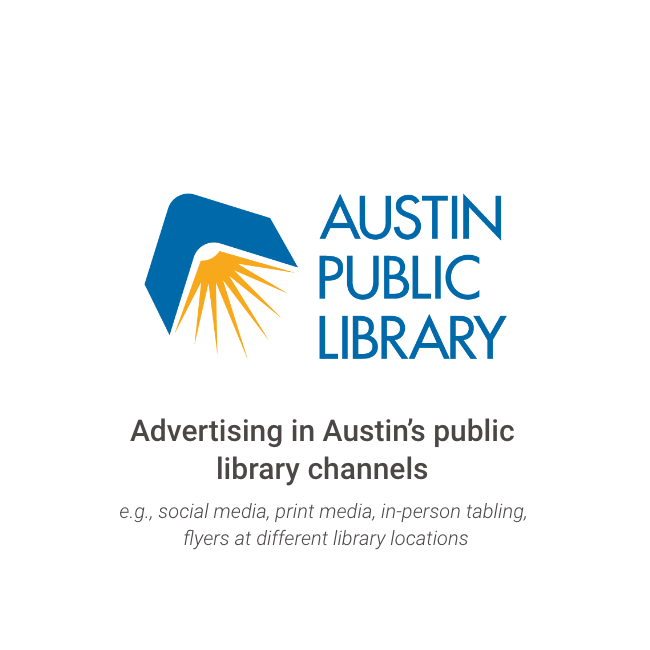

Research Promotion channels testing & next-steps
Austin Public Library Research Promotions
To validate and improve the process of promoting and recruiting diverse Austin residents using Austin Public Library which is one of the channels identified from the prioritization matrix, I reached to the Austin public library’s Public Information Officer and Social media coordinator with the goal of understanding the feasibility of collaboration to promote the Office of Design and Delivery research using library channels and also identifying the outreaching channels at Austin Public Library(E.g. - Social media, Library ambassador program, Library notice boards, and pamphlets outreach, etc.)
After clearly understanding the feasible channels and requirements for promoting research at Austin public library, I promoted the Office of Design and Delivery research in collaboration with Austin Public Library on their Facebook and Instagram social media channels.
RESEARCH PROMOTIONS OUTCOMES
I got at least 141 sign-ups in two days, which increased our general participant database by 37%, and got better race/ethnicity-based and age-based diverse research sign-ups.
Insights from Austin public library research promotion testing
This research promotion testing helped in identifying, validating, and documenting the official process of promoting user research using library channels. This official process will be updated soon in the City of Austin research recruitment strategy guidelines.
Opportunities for targeting race/ethnicity, income, technology, immigrants based outreaching programs to recruit residents by promoting the City of Austin research in the library locations by aligning with the zip codes with those communities and community programs like Social media ambassador.
Established collaboration relationship with Austin public library for future research recruitment promotion.
Promoting research and recruit Austin Spanish speaker residents.
Non-profit organizations collaboration Promotions
During this time, out of curiosity, I started thinking about how other cities in the United States recruit diverse participants to participate in research. I reached out to San Francisco digital services and scheduled a meeting with one of the user researchers and the user research coordinator to learn about their user recruitment process.
From our conversation -
✔️ I understood that they heavily depend on the Changemaker organization collaboration to reach out to and recruit participants for their continuous and ongoing research needs. With this, I validated nonprofit organization collaborations can yield a very high possibility of reaching and recruiting diverse residents.
NEXT STEPS:
Currently, working on building a recruitment strategy using a non-profit organization.
Nextdoor and Radio research promotions
I took the advantage of using the City of Austin Nextdoor and radio show - Health talk(Kazi 88.7 FM) to promote and recruit the Austin residents to participate in the Homelessness Dashboard usability test which is conducted by me. I got 240 research sign-up responses in 2 days from the Austin community using the Nextdoor App but there are NO responses from Radio promotion for research sign-ups.
From this research promotion experience,
✔️ I can validate the Nextdoor App for research promotion and recruitment and ❌ invalidate radio promotions are not really feasible channels to promote and recruit research sign-up.
Retrospection
The guidelines and recruitment strategy are helpful and valuable when guiding other city departments in promoting their research to recruit diverse Austin residents to participate in their research.
Researching and learning from other cities about how they approach research promoting and recruiting diverse and equitable participants gave validation to the study.





